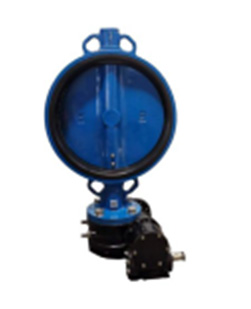నవం . 14, 2024 18:37 Back to list
rubber joint flange
Understanding Rubber Joint Flanges Applications, Benefits, and Installation
Rubber joint flanges, often referred to as rubber expansion joints or flexible couplings, play a crucial role in various industries, including plumbing, HVAC, and manufacturing. They are designed to accommodate movement, reduce vibrations, and absorb shock between connected pipes or equipment. Understanding their function, applications, and installation procedures is essential for engineers and technicians.
What are Rubber Joint Flanges?
Rubber joint flanges are flexible connections made from rubber or elastomeric materials, typically reinforced with fabric or steel for enhanced durability. These flanges are used to connect two sections of pipe or equipment, allowing for slight misalignments and thermal expansions. They usually come equipped with flanged ends for easy installation, fitting standard dimensions to match existing piping systems.
Key Applications
1. Water and Wastewater Management In municipalities, rubber joint flanges are utilized in sewer systems and wastewater treatment plants to absorb pipeline movements caused by ground shifts and thermal variations.
2. HVAC Systems Rubber joints are prevalent in heating, ventilation, and air conditioning systems. They help isolate vibrations generated by pumps and fans, preventing noise from transferring through the building structure.
3. Industrial Processes In manufacturing plants, these flanges are crucial in maintaining the integrity of pipeline systems that transport liquids, gases, and slurries. They minimize the risk of leaks and equipment wear due to vibrations or movement.
4. Power Generation In power plants, rubber joint flanges connect various components, ensuring reliable operation while accommodating thermal expansion and potential misalignments caused by fluctuating temperatures.
Benefits of Rubber Joint Flanges
1. Flexibility One of the most significant advantages of rubber joint flanges is their flexibility. They can absorb vibrations and movements, protecting connected equipment from stress and damage.
2. Noise Reduction Rubber materials are excellent sound dampeners. By using rubber joints, facilities can significantly reduce operational noise, fostering a more comfortable environment.
rubber joint flange

3. Corrosion Resistance Rubber is resistant to many chemicals, making rubber joint flanges ideal for applications involving corrosive substances. This resistance extends the service life of the installation.
4. Easy Installation The flanged design of rubber joints simplifies installation, allowing for quick replacements and adjustments without the need for specialized tools.
5. Cost-Effective Solution Compared to metal alternatives, rubber joint flanges tend to be more affordable, making them a popular choice for both new installations and retrofits.
Installation Considerations
When installing rubber joint flanges, a few key considerations should be taken into account to ensure optimal performance
- Alignment Proper alignment of the flange faces is crucial. Misalignment can lead to premature failure and leakage.
- Torque Specifications Follow manufacturer recommendations for bolt torque to avoid over-tightening or under-tightening, both of which can lead to installation issues.
- Support Systems Ensure that the pipeline is adequately supported, as excessive weight or strain on rubber joints can lead to failure.
- Regular Inspections Periodically check rubber joint flanges for signs of wear, such as cracking or deformation, and replace them as necessary to maintain the integrity of the system.
Conclusion
Rubber joint flanges are essential components in various industrial applications, providing flexibility, noise reduction, and corrosion resistance. Understanding their benefits and proper installation techniques is crucial for maintaining efficient and reliable piping systems. As industries continue to evolve, the demand for effective solutions like rubber joint flanges will undoubtedly grow, cementing their place in modern engineering practices.
Share
-
Reliable Wafer Type Butterfly Valves for Every IndustryNewsJul.25,2025
-
Reliable Flow Control Begins with the Right Ball Check ValveNewsJul.25,2025
-
Precision Flow Control Starts with Quality ValvesNewsJul.25,2025
-
Industrial Flow Control ReliabilityNewsJul.25,2025
-
Engineered for Efficiency Gate Valves That Power Industrial PerformanceNewsJul.25,2025
-
Empowering Infrastructure Through Quality ManufacturingNewsJul.25,2025